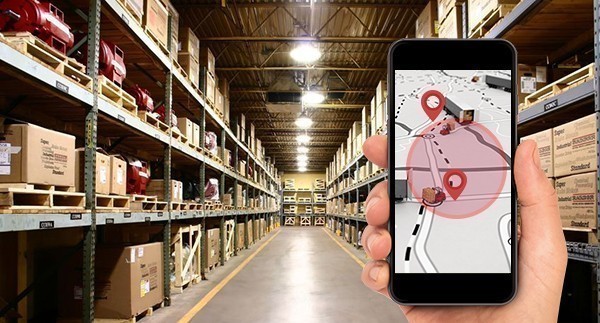
Asset tracking software is a must-have for the modern transportation fleet. It’s essential for keeping tabs on multiple features of your fleet operations, from maintenance schedules and identifying where your vehicles are to what condition they’re in.
But with so many options available, how do you choose the best one for your business? This post will explain fixed asset tracking and the software that supports it. We’ll also identify key considerations when investing in asset tracking software.
What is Fixed Asset Tracking?
Let’s first define fixed asset tracking – what is it and how does it work?
Fixed asset tracking is a technology-enabled process that involves collecting, overseeing and managing data regarding a company’s fixed assets. These mainly include property, plant, and equipment (PP&E) assets that are considered integral for business operations.
What Fixed Asset Tracking Can Monitor
Assets can vary from business to business, from appliances to land, yet they all share “fixed” characteristics. This means they have been acquired with the intention of long-term use and are not easy to exchange for cash.
Common examples of fixed assets (relevant to the transport industry) include:
- Vehicles such as trucks and cars
- Machinery such as trailers and forklifts
- Tools and other equipment used by technicians
The Benefits of Fixed Asset Tracking
Some fleet managers deem fixed asset tracking as an unnecessary expense. They justify their position with claims that they already have a handle on their inventory and that they trust their employees to keep track of vehicles and equipment.
While this may be true for some fleets, many of these operators may not take into account the significant benefits of a successful fixed asset tracking system and the accompanying software:
1. Increased Accountability
Trust aside, people are fallible and mistakes happen. Fixed asset tracking can increase your fleet’s accountability with an accurate and up-to-date record of all fixed assets in use. This reduces the likelihood that something goes missing or gets damaged.
2. Improved Efficiency
When you have full visibility of your fixed assets, it’s easier to make decisions about where to allocate them. This can lead to improved efficiency in your fleet operations.
For example, if you know that a particular truck is underutilized, you can reassign it to another route. Or, if you see that a particular piece of equipment is being repaired more frequently than others, you can assess whether or not to replace it.
3. Reduced Costs
As gas prices and interest rates continue to climb, the pressure has mounted for fleet managers to cut costs and improve their bottom line by any means necessary.
Fortunately, fixed asset tracking can help. By keeping tabs on company assets, you can avoid paying for insurance on vehicles that have been sold or leased. You can also reduce fuel and maintenance costs by ensuring that your vehicles are being used as efficiently as possible.
How to Pick the Right Asset Tracking Software for Your Business
While there’s no question that fixed asset tracking software is an important resource to have when managing a modern fleet, it’s worth noting that not all software is created equal. There are many features and capabilities based entirely on your business needs, and as we head into 2023, there are some features that are worth prioritizing over others.
Ease of Use
The first thing you should always consider when choosing any software solution is user experience and ease of use for all members of your team.
Asset tracking software should be designed with both fleet managers and drivers in mind. The user interface should be intuitive and easy to navigate, and the software should be able to integrate seamlessly with the systems you already have in place.
GPS Tracking
The right asset tracking software solution allows you to see the real-time location of your vehicles and equipment, which is critical for managing your fleet effectively.
Maintenance Tracking
Maintenance tracking is another key feature that allows you to keep track of your vehicles and equipment, and when they are due for servicing. This is important for preventing costly breakdowns, reducing asset downtime and ensuring that your fleet is always running smoothly.
Reporting and Analytics
Reporting and analytics capabilities are also essential for effective asset tracking software This feature generates reports on customized data sets that matter to your operations, such as vehicle utilization, fuel usage and maintenance costs.
This information can be incredibly valuable in helping you make decisions about how to run your fleet more efficiently.
Scalability
Finally, it’s important to consider the scalability of the asset tracking software you’re considering. As your fleet grows, you’ll need a solution that can grow with it. Look for a software product that offers flexible pricing and the ability to add on additional users and vehicles as needed.
Picking the right asset tracking software is critical for managing a fleet effectively. Keep these tips in mind to ensure that you choose a solution that will meet your needs now and in the future.
